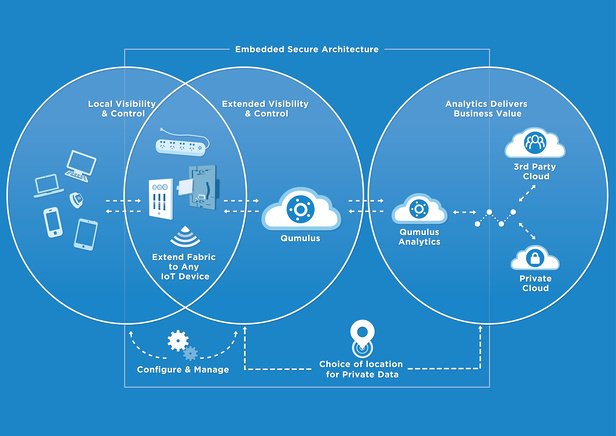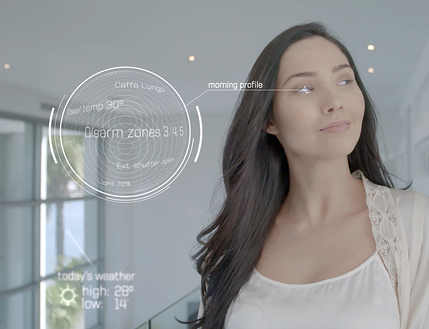To implement IoT successfully, avoid these 6 mistakes. (Don't start before you've done No.1)
IoT, Truly Intelligent Buildings, Intelligent Buildings, Quantify Technology
Introduction
Thousands of companies are rushing to market with millions of IoT devices and solutions. There are many pitfalls that lie in the way however, to trip up the unprepared and prevent successful implementation. The intention of this article is to highlight the main issues that are cause for concern, in an attempt to help you avoid them. Whether you are a developer or consumer, any of these could cause your IoT deployment to fail.
1. Security is your No.1 feature
This should be so obvious that it need not be mentioned. However it is still surprising that for some, security is not an intrinsic part of any IoT device. It is not something that can be easily added once the main parts of your system have been developed. If you don't start with security and fail to build a robust model, your device will not be secure enough for people to justify its use. This is irrespective of how good the technology is itself or how inviting the application may appear on the surface. Security is not a check-box on the feature list, it must be demonstrated as something core to the entire system.
This is all the more true when everything is interconnected, not just individual devices, but also different systems. If your system is not intrinsically safe, then nobody will allow your to devices to connect to theirs. This will impact not just people's desire to adopt your product, it will also limit the features and benefits that you are able to offer. Truly Intelligent IoT implementations rely on the ability to securely share data for everyone's mutual benefit. If this can't be done securely, then in practice it can't be done at all.
2. Is your platform scalable?
Many IoT devices are simple in concept, however all but the most basic are complex in implementation. There are many layers to a robust IoT platform and they all need to work seamlessly together. Data and processing bottlenecks between devices and the platform layers, can severely limit the effectiveness of the entire system. Amongst other issues, you need to consider how the full end-to-end system will work and what processing will be done at which point.
 A Fully Scalable End-To-End System Is Critical
A Fully Scalable End-To-End System Is Critical
Remote devices need to be effectively managed across the whole system, so durable device hardware is also a critical part of scalability. Service calls and support issues will quickly become unmanageable if the hardware is not reliable. Developing a scalable IoT platform can quickly become complex and cause problems if not done correctly.
When choosing which platform to host your IoT implementation, it makes sense to chose one that provides full end-to-end scalability and is easily extensible to other IoT devices.
3. Interoperability

A related, but distinct concern is interoperability. Being able to operate with other IoT devices in the ecosystem is critical. Using standard protocols allied to a simple extensible system is one way to ensure that cross device/system connectivity work in a manageable way. Failure to do this results in stand-alone or satellite systems that are unable to fully reap the benefits of a completely integrated IoT implementation.
It is naive to think that any IoT system will exist in a vacuum, without the need to connect to others. New technologies and applications will come along. It is imperative to build any IoT device with this in mind. An extensible system that uses common protocols to enable easy connectivity will ensure longevity for the system. This is particularly critical when installing fixed hardware IoT systems; for instance when planning and implementing Truly Intelligent Buildings.
4. It's not about just being connected to the internet
 Adding internet connectivity to an already existing device does not necessarily make it a real IoT implementation. To fully realise the true value of IoT you must add some intelligence and functionality. For instance, switching your lights on and off from an app on your phone is nice, but not all that useful. However, sending you an alert that a light has been left on, or that a sensor light has been triggered is much more useful. Similarly, turning the lights off automatically when a building or room is not use adds some practical benefits beyond simple connectivity.
Adding internet connectivity to an already existing device does not necessarily make it a real IoT implementation. To fully realise the true value of IoT you must add some intelligence and functionality. For instance, switching your lights on and off from an app on your phone is nice, but not all that useful. However, sending you an alert that a light has been left on, or that a sensor light has been triggered is much more useful. Similarly, turning the lights off automatically when a building or room is not use adds some practical benefits beyond simple connectivity.
These and other types of predictive analytics and AI are key to adding new capabilities and benefits. Connectivity isn't enough to be truly useful.
5. It's not the technology, it's the people
 Whiz bang technology is one thing, however you have to passionate about solving real world problems and improving people's lives in some way. The practical applications you are able to provide is what will make the difference. You need to focus on what benefits you can deliver for people and how they will interact with your devices. It must be intuitive and obvious or people will either not attain the benefits, or worse abandon the system completely.
Whiz bang technology is one thing, however you have to passionate about solving real world problems and improving people's lives in some way. The practical applications you are able to provide is what will make the difference. You need to focus on what benefits you can deliver for people and how they will interact with your devices. It must be intuitive and obvious or people will either not attain the benefits, or worse abandon the system completely.
Even before developing the technology you must consider what problems you want to solve or how you want to make people's lives better. New technology may generate initial excitement, but that's not enough to motivate many of us to use it in our everyday lives, unless it has some practical use.
If you have a passion for something and a clear vision of how things can be improved for people, then the technology will follow. Developing some new technology is merely a research project. It can only be considered successful when a real world practical solution is identified and deployed.
6. Privacy and Legal Concerns
Know your market's attitude to privacy both for individuals and the regulatory landscape. So much of IoT relies on data collection and analysis.

- What data is collected?
- How/where is this data is held?
- Who has access to the data, for how long?
- Is the data anonymous or individually identifiable?
These and many other questions must be answered and tested for conformance. Falling down on this aspect of your implementation may leave you dead in the water, no matter how great the technology is.
Sensitivity to this aspect is critical, particularly is it may not be obvious how the data may be used in the future or by another connected system.
Conclusion
IoT is obviously disruptive and here to stay, but only those platforms that are built in a thoughtful way will end up being successful and stand the test of time. The rest will quickly fall by the wayside.
At Quantify Technology, we are building a Platform For Life that brings together all the benefits of IoT.



